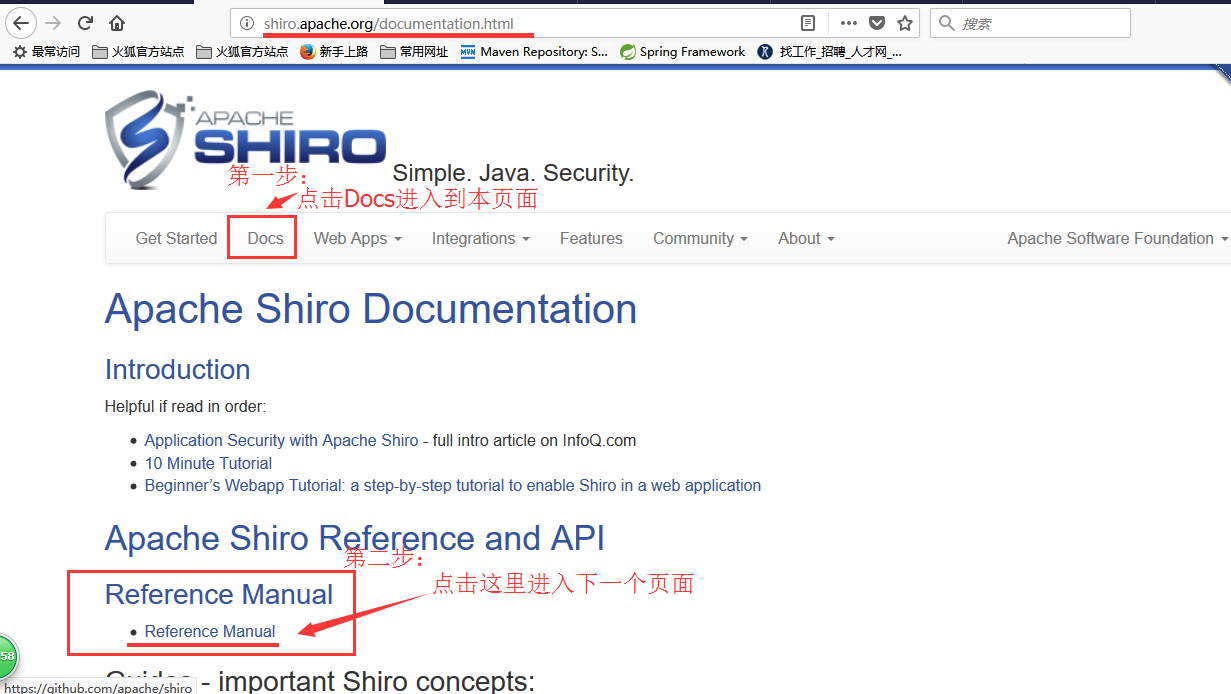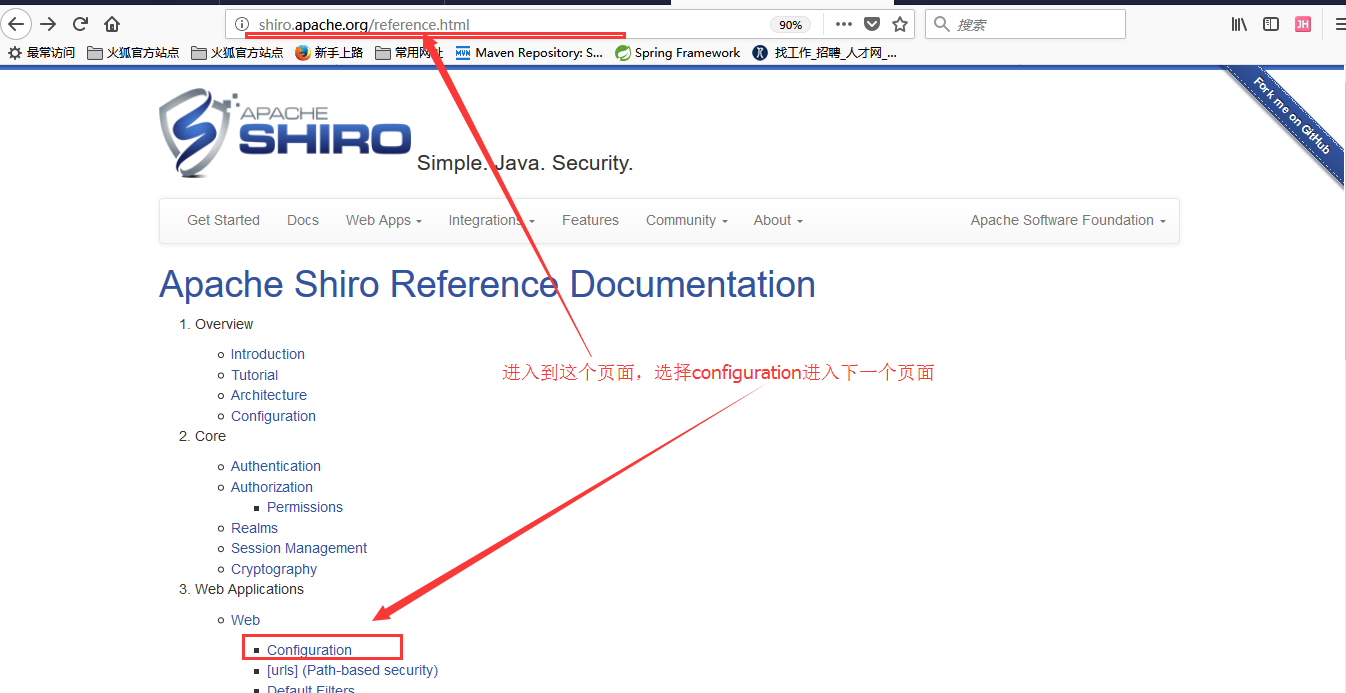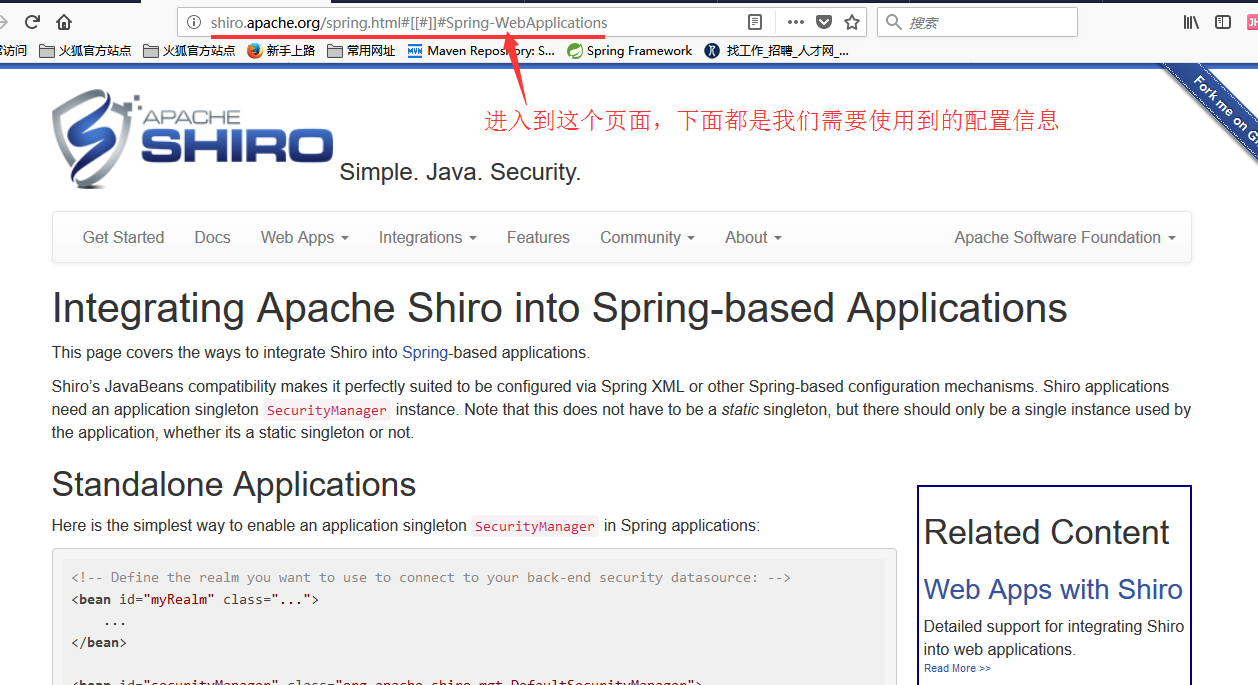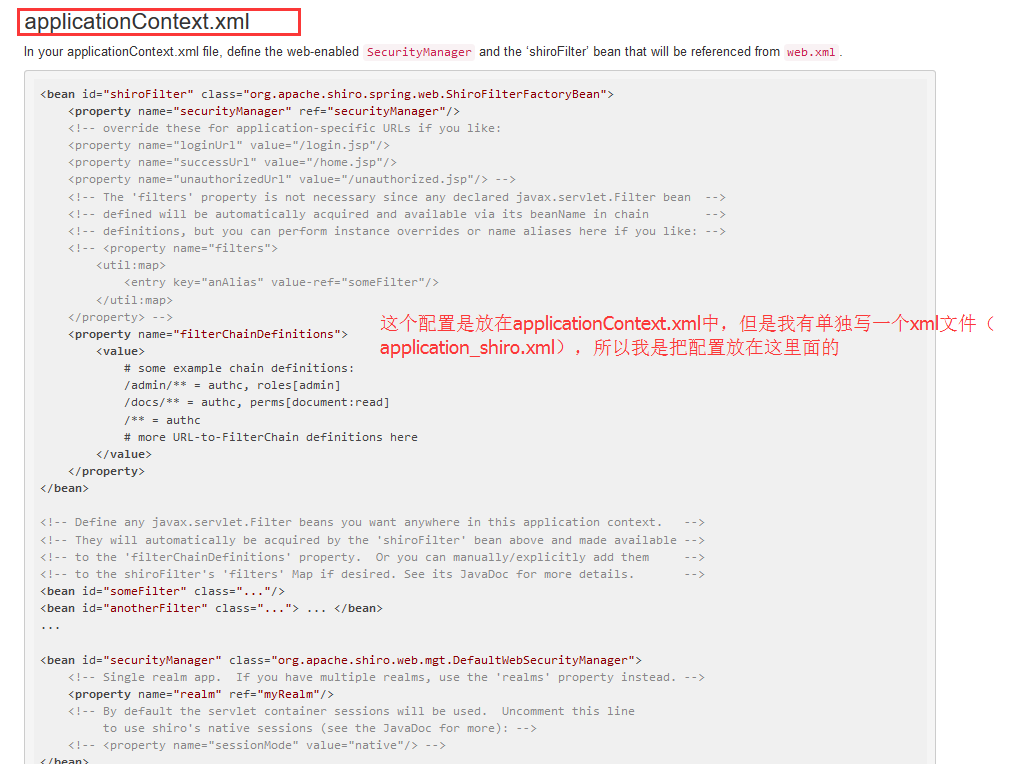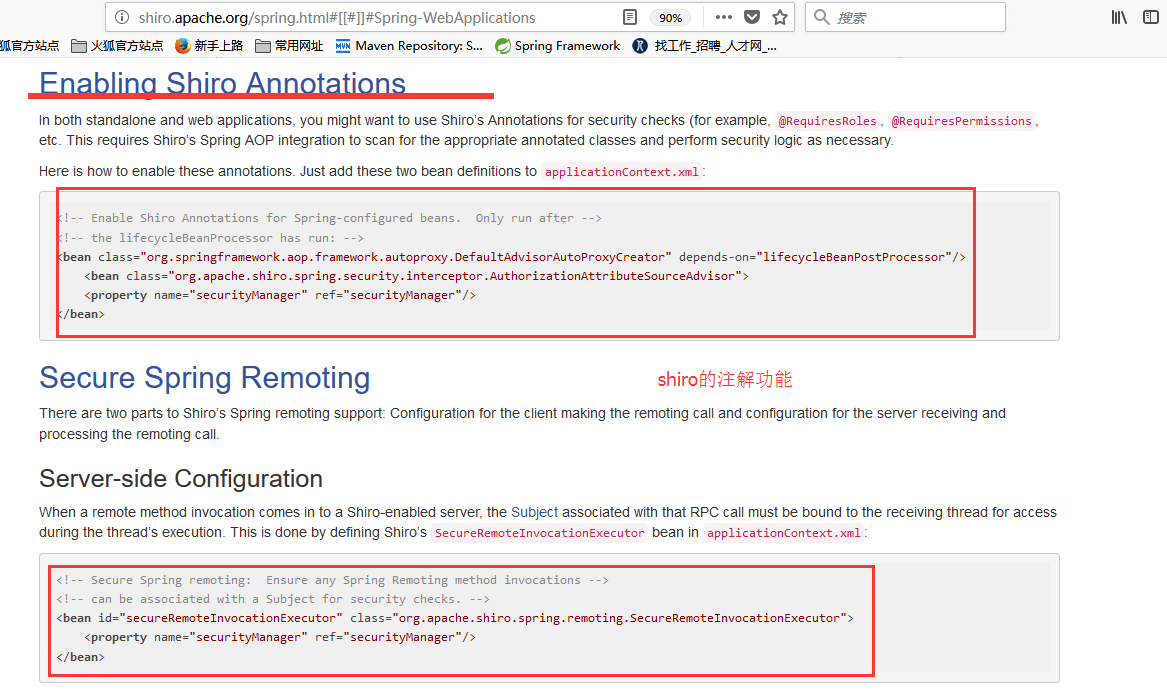maven專案中SSM+Shiro整合配置中,在有SpringMVC+MyBatis配置下整合shiro的配置步驟
阿新 • • 發佈:2019-01-01
最近在做SSM(SpringMVC+Shiro+MyBatis)整合的一個專案,對於shiro的配置不是特別熟練,於是想要寫下來,加深一下印象。在有SpringMVC+MyBatis配置的基礎上整合shiro:
首先進入shiro的官方網站(http://shiro.apache.org/),如下圖所示(圖中有提示下一步怎麼操作):
點選Download進入到下面這個頁面:
向下拖動,可以看到shiro的相關依賴,新增四個依賴到(pom.xml)中:分別是shiro-core、shiro-spring、shiro-web、shiro-ehcache,
這裡我把我的依賴給弄下來(pom.xml):
<!-- Shiro --> <dependency> <groupId>org.apache.shiro</groupId> <artifactId>shiro-core</artifactId> <version>1.3.2</version> </dependency> <dependency> <groupId>org.apache.shiro</groupId> <artifactId>shiro-web</artifactId> <version>1.3.2</version> </dependency> <dependency> <groupId>org.apache.shiro</groupId> <artifactId>shiro-spring</artifactId> <version>1.3.2</version> </dependency> <dependency> <groupId>org.apache.shiro</groupId> <artifactId>shiro-ehcache</artifactId> <version>1.3.2</version> </dependency>
新增完依賴之後,開始配置:
依次如圖所示,找到有配置資訊的頁面:
進入到配置檔案(Web-configuration):
點選上圖指示的地方,進入到下一個頁面:
進入到這裡,可以開始配置了:
如圖中所示,配置檔案:
我現在我把我配置的資訊給複製過來,方便大家直接複製:
這是applicationContext.xml裡的配置,但是我是將有關shiro的配置單獨放在一個xml檔案中(application_shiro.xml),我個人覺得這樣更容易區分:
<?xml version="1.0" encoding="UTF-8"?> <beans xmlns="http://www.springframework.org/schema/beans" xmlns:xsi="http://www.w3.org/2001/XMLSchema-instance" xsi:schemaLocation="http://www.springframework.org/schema/beans http://www.springframework.org/schema/beans/spring-beans.xsd"> <!--第一步:直接配置一個 securityManager --> <bean id="securityManager" class="org.apache.shiro.web.mgt.DefaultWebSecurityManager"> <!--剛配置時,先把這條註釋掉,等後面寫了MyRealm.java時,再把它的註釋去掉,因為如果沒有去掉就會在 tomcat開啟時報一個錯誤 --> <!--<property name="realm" ref="myRealm" /> --> </bean> <bean id="lifecycleBeanPostProcessor" class="org.apache.shiro.spring.LifecycleBeanPostProcessor" /> <!-- 第三步:把請求路徑攔截之後的處理 --> <bean id="shiroFilter" class="org.apache.shiro.spring.web.ShiroFilterFactoryBean"> <!--shiro整個的處理,都由securityManger指定和決定 --> <property name="securityManager" ref="securityManager" /> <!-- loginUrl==>如果登入成功,跳轉到哪個頁面,或者執行哪個請求 --> <property name="loginUrl" value="/login.jsp" /> <!-- 驗證通過執行的請求或者跳轉 --> <property name="successUrl" value="/home.jsp" /> <!-- 驗證不通過執行的請求或者跳轉 --> <property name="unauthorizedUrl" value="/unauthorized.jsp" /> <!-- 具體的攔截路徑和攔截的方式和角色和許可權的範圍 --> <property name="filterChainDefinitions"> <value> </value> </property> </bean> </beans> 接著配置web.xml:
<!-- 第二步:伺服器啟動時,載入shiro的配置檔案
-->
<filter>
<filter-name>shiroFilter</filter-name>
<filter-class>org.springframework.web.filter.DelegatingFilterProxy</filter-class>
<init-param>
<param-name>targetFilterLifecycle</param-name>
<param-value>true</param-value>
</init-param>
</filter>
<!-- 攔截所有的請求路徑 -->
<filter-mapping>
<filter-name>shiroFilter</filter-name>
<url-pattern>/*</url-pattern>
</filter-mapping>
<!-- 還有一個地方要注意,因為我是單獨把shiro寫在一個xml檔案中,新加了一個檔案,所以要新增路徑 -->
<context-param>
<param-name>contextConfigLocation</param-name>
<param-value>
classpath:applicationContext.xml
classpath:application_shiro.xml
</param-value>
</context-param>
<!-- 配置啟用Shiro的註解功能 -->
<bean class="org.springframework.aop.framework.autoproxy.DefaultAdvisorAutoProxyCreator"
depends-on="lifecycleBeanPostProcessor">
<property name="proxyTargetClass" value="true"></property>
</bean>
<bean class="org.apache.shiro.spring.security.interceptor.AuthorizationAttributeSourceAdvisor">
<property name="securityManager" ref="securityManager"/>
</bean>然後開啟
配置檔案完成,開啟tomcat,成功開啟(出現如圖所示的紅線部分,說明配置shiro成功):
配置成功後,可以開始寫程式碼了。






